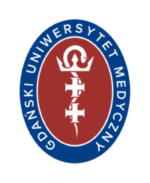Innovative business solutions that are helping to build the Indian Medical Device Market
![]()
Article by Molshree Pandey, Head of Innovation Centre Denmark, India
From focusing towards basic primary care to building super speciality hospitals, Indian healthcare, over the years has come a long way in delivering quality patient care.
Despite this, infant mortality rate is seven times higher than the US. There is only 0.9 hospital bed per 1000 patients in India and the physician to patient per 1000 people ratio still stand at a meagre 0.7.
Analysts globally, estimate that by 2020 the burden of atherothrombotic CVD in India will surpass other regions of the world. India constitutes about 15% of the entire pool of hepatitis B in the world. On top of this, the vast majority of the population (approximately 85%) still pays for all the medical expenses out of their own pocket.
However, I truly believe that the vast majority of ‘out of box thinking’ takes place when there is a need to solve problems and you are faced by challenging situations. The interesting question is what – despite these oddities – can help the Indian healthcare industry to prosper and come up with unique products and business models
Necessity, not Scarcity, is the Mother of Invention.
This article details how intelligent business decisions have helped domestic and foreign companies and the industry as a whole to carve a growth path for themselves in India.
You do not have to compromise on the quality to bring down the cost
I hear a lot of companies argue that India is one of the most cost sensitive markets.
Indian buyers are always on a lookout for the lowest possible price, even if it is at the cost of quality. This makes it difficult to sustain the competition from local and Chinese players in the market.
However, this is not always the case.
What foreign companies fail to understand is the difference in usage pattern in this part of the world. An MRI machine may get used only for 4-5 hours in a day for 5 days in a week in Europe while in India, the similar set-up may be used for almost for 15-16 hours per day and nearly 6 days in a week. Similarly, many products come with bundled offerings like after sales service, accessories and features that may not appeal to an Indian buyer.
The key here is to readjust the product offering without changing the basic product structure and quality. Just offer the device as a stand alone that can run 16 hours a day for 6 days. Indian users will then figure out about the maintenance assisted by its low cost engineers. This is exactly what the companies like GE Healthcare, Siemens have done with their products. GE in fact introduced the ‘in country, for country’ strategy for India.
Another complaint I often hear is that Indian buyers are more interested in ‘how much money I will make on this business’ and this sentiment overrides very important aspects of the product like its technology, the number of years of research put into it etc.
But the important thing here is to note that for Indian businesses credit does not come easily and interest rates are very high.The economy runs on cash dealings.
We hope things will change after the demonetization drive but there is still a long way to go. Therefore, if you can show your customer how the use of your product can increase the cash flow the high price is no longer a barrier.
It is important to remember that even at a lower cost one can prosper as volumes are high
It is often assumed that if the cost of a procedure is e.g. 95% lower than in the US or Europe, then the physicians in India are not qualified enough to match the quality of their western counterparts.
However, some of the below mentioned facts are worth considering :
o Medanta Hospital, has conducted till date the highest number of renal robotic transplants in the world. It also holds the world record for most number of Total Knee Replacements in the least amount of time.
o Narayan health 30-day post surgery mortality rate for coronary artery bypass procedures at its Bangalore hospital is below the average rate recorded by a sample of 143 hospitals in Texas.
o The Tata Memorial Hospital is a specialist cancer treatment and research centre, closely associated with the Advanced Centre for Treatment, Research and Education in Cancer (ACTREC). One of the fields of specialization of this hospital is in the treatment of acute lymphoblastic leukemia (A.L.L). The hospital claims to treat and cure 99% of the A.L.L patient.
o The Apollo Hospitals Group’s flagship in Hyderabad have recorded equivalent or better outcomes than the international standards for medical complications associated with knee, coronary, and prostate surgery as well as for infections related to the operating theater and catheters
o Jawaharlal Institute of Postgraduate Medical Education and Research (JIPMER) has been selected as the best hospitals by the British Medical Journal for having the best medicine experts in South Asia
Another assumption often done is that the reason for the low price of procedures is the low cost of labour. However, an analysis by Harvard Business quotes, ‘the labor cost differential is just a small part of the story. We calculated the price of an open-heart surgery at Narayan Health after adjusting the salaries of doctors and other staff to match U.S. levels. Even with the higher wages factored in; the cost was still only 4% to 18% of a comparable procedure in a U.S. hospital’.
At the same time, the equipment cost is much higher in India (India is mostly driven by import and the import duties just add up to the overall cost).
The truth is that the innovative business models that the Indian hospitals have developed are helping them to achieve the goals of low cost and high quality service.
Hospitals in smaller cities and towns (mostly providing primary healthcare services and basic diagnosis) have affiliations with big/mega hospitals in bigger cities (using most sophisticated equipment, staff and procedures). Use of modern technology has enabled the delivery of healthcare even to the remotest locations in the country.
At Narayana Health, Telemedicine took to functioning in 2001, with – ISRO empowering the connectivity and we now have 130 centres across the globe connected. By reducing the barriers to treatment, Narayan Health today conducts more open-heart surgeries than anywhere else in the world. The hospital claims that they conduct almost 42 heart surgeries and 24 open heart surgeries and 35 catheterization procedures daily and more than 95000 cardiac surgeries have been done since the chain’s existence.
The equation thus becomes simple: Higher volumes leads to efficient use of resources and helps in economies of scale.
The unmet need of the system has always been the greatest source of inspiration for new products and process developments
You have to visit an Indian hospital to believe this.
Once the doctor writes the test that one has to get done, it takes almost 1-1.5 hours to get the test done in the same hospital (the time is spent getting the billing done, waiting in the queue for your turn) and then almost one full day for reports to come for basic enquiries (urine tests, blood sugar, pregnancy etc) and almost 2-3 up to 5 days for some more complex tests. Similarly, for devices driven test.
There is need for quick results, faster diagnosis and real time monitoring!
Not every patient needs to undergo an angiography to know if there has been a heart attack. A portable and wearable device that monitors the overall health and well being of a patient would always be preferred over going to hospitals and spending one full day to get some basic tests to know the heart rate and health.
With fewer doctors to meet the growing health care needs of the population, hospitals are rapidly investing in robotic solutions or surgery. As discussed earlier, there is a major resource gap when it comes to healthcare workers and to increase the magnitude of the problem, nearly 60% of these healthcare workers are located in urban areas.
With 70% of its people living in villages, often far from health care providers, it’s clear that there is a big need to have facilities catering to needs of patients even in some of these remote locations.
Solutions that could link up health workers, health clinics, pharmacies, diagnostic labs, doctors, and central medical facilities would be welcomed with open arms in India.
Need for remote diagnostic devices for measurement of basic parameters such as blood pressure, heart rate, electrical activity of the heart and pulse rate is rapidly increasing. My analysis says that there are four clear areas to work on (create product or work on product positioning) for companies who are looking at the Indian market:
o Rapid diagnostics
o Remote diagnosis
o Simpler solutions replacing specialized equipments
o Devices that improve doctors’ efficiency
There is a clear gap between the existing solutions, prevalence of disease conditions and market needs in India. Companies looking to establish themselves in this market have to think of solutions to bridge these gaps.
Learn more about the Indian medical device market opportunities through the innovation camp organized by Innovation Centre Denmark, Royal Danish Embassy, India in association with ScanBalt and InnovatioCuris from September 4-7, 2017 in New Delhi/ Bangalore.
Contact for more details.
ScanBalt News
17 April 2024
COBIOE project consortium opens an interconnection platform for the European biomanufacturing sector
12 March 2024
19th National Conference on Health Economy 2024 | 30-31 May 2024 | Mecklenburg-Vorpommern, Germany














